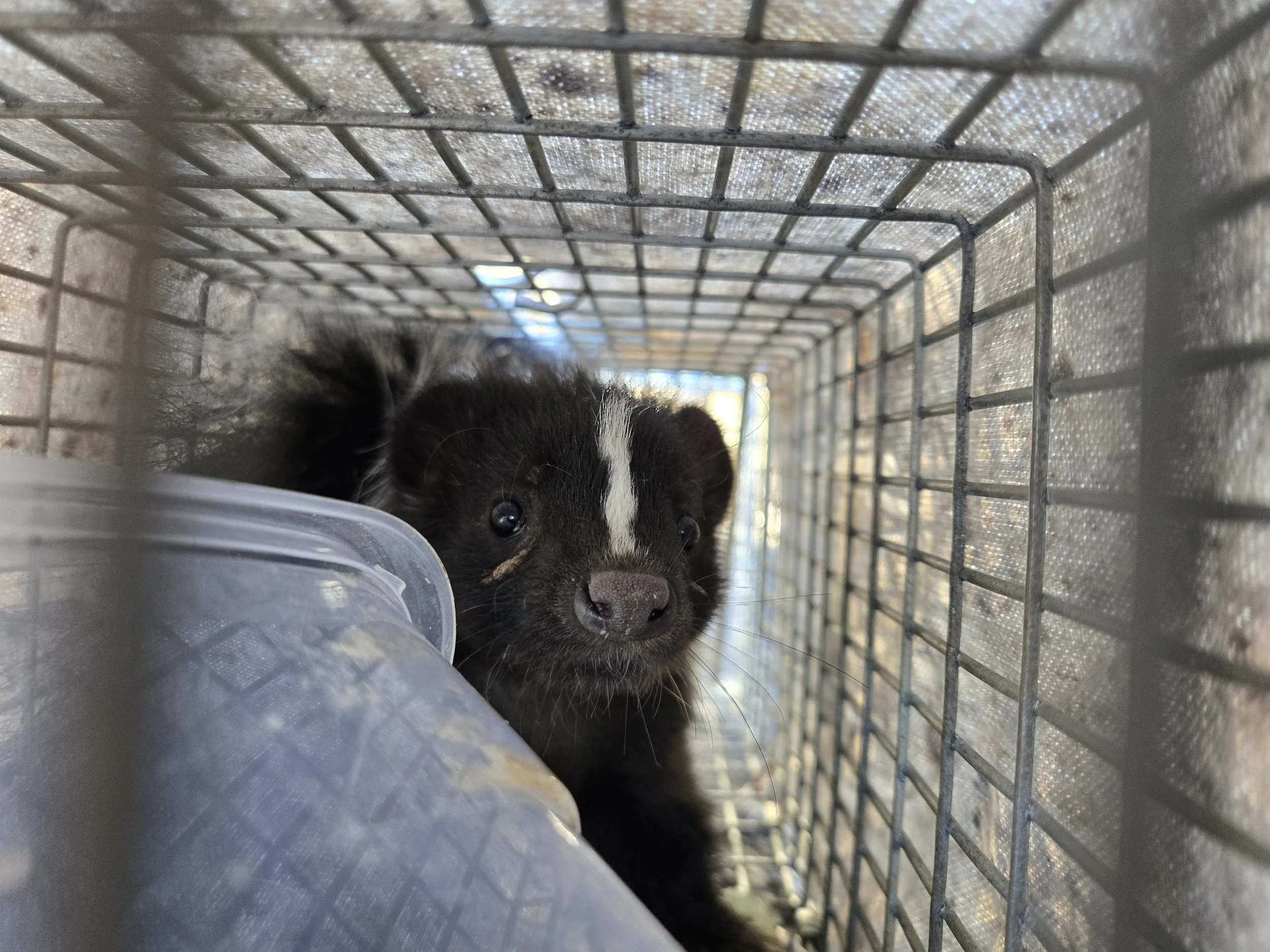Skunks (Striped, hog-nosed, hooded, and spotted)

Striped skunk. Skunks of all species are a major rabies vector species. Meaning they have higher numbers of rabid animals and pass the rabies on to new hosts.

Striped skunk. Skunks like to spend all night reaching out of the trap, dragging in dirt and mud. Then they eat their meal, then nap until we arrive.

Striped skunk. Skunks know that they're skunks and that they stink if they want to.

Ancient hog nosed skunk. The oldest Quinn has ever personally caught.

Hog nosed skunk. He might have been going blind, but his nose worked just fine and he was still plump and happy.

Striped skunk. The bed of the truck is often filled with skunk scented dirt thanks to these guys.

Striped skunk. Striped skunks are by far the most common skunk found on the valley floor.

Hog nosed skunk. Skunks are excellent diggers and live in burrows underground. Or under sheds in Tucson yards.

Skunks find themselves in all manner of places. Like under this rack of liquor behind the bar at a country club.

Striped skunk. Skunks can spray up to ~6x before they have to "reload". When skunks tear off their trap covers, the pucker factor rises.

Spotted skunk. Spotted skunks are the only species of skunk that Tucson has that climbs extremely well.

Spotted skunks can be found in the foothills of Tucson, and in rocky sparsely forested foothills of all southern Arizona.

Spotted skunks are the cutest of our skunk species. Expert opinion.

Spotted skunks are cavity "nesters" and inhabit tree cavities and rocky cliff faces.

All skunk species do a characteristic stomping of their front feet as a warning. Come closer, get sprayed.

Spotted skunk under a tool chest. Cat food and feeding feral cats is a major reason why we receive calls about skunks.

Skunks are basically just stinky cats and will quickly appear at cat feeding stations. Skunks then move in nearby to set up a bed and breakfast situation.

Striped skunk (male). Because these feeding stations are disease transfer hotspots, skunks cannot be relocated more than one mile from where they were captured.

Striped skunk. Skunks of all species are also known "grubbers" and start digging in lawns, flower beds, and under palo verde trees for grubs

Striped skunk. Grubbing skunks are more difficult to trap. Its hard to convince something to go into a trap for food when there's a whoooole lawn of it right beside the trap.

Striped skunk with an underbite. All skunks that spray are dubbed "Stinky Steve". This was Thtinky Thteve.

Striped skunk. It is challenging to get a candid photo of skunks in traps. They always want to point their butt at you...

Striped skunk. Skunks can spray as soon as their eyes are open.

Striped skunk. Yes, some skunks did spray in the creation of this gallery.

Limiting food sources (cat food), applying beneficial nematodes to lawns/gardens, and building dig defensed into new or existing sheds helps prevent skunk conflict.

We get a fair number of calls for DIY trapping gone wrong. People try to trap a squirrel, cat, raccoon, whatever, and end up with a skunk and a problem.

Striped skunk. Skunks are omnivores, and proud members of the trash mob. Making them well suited to urban environments.
